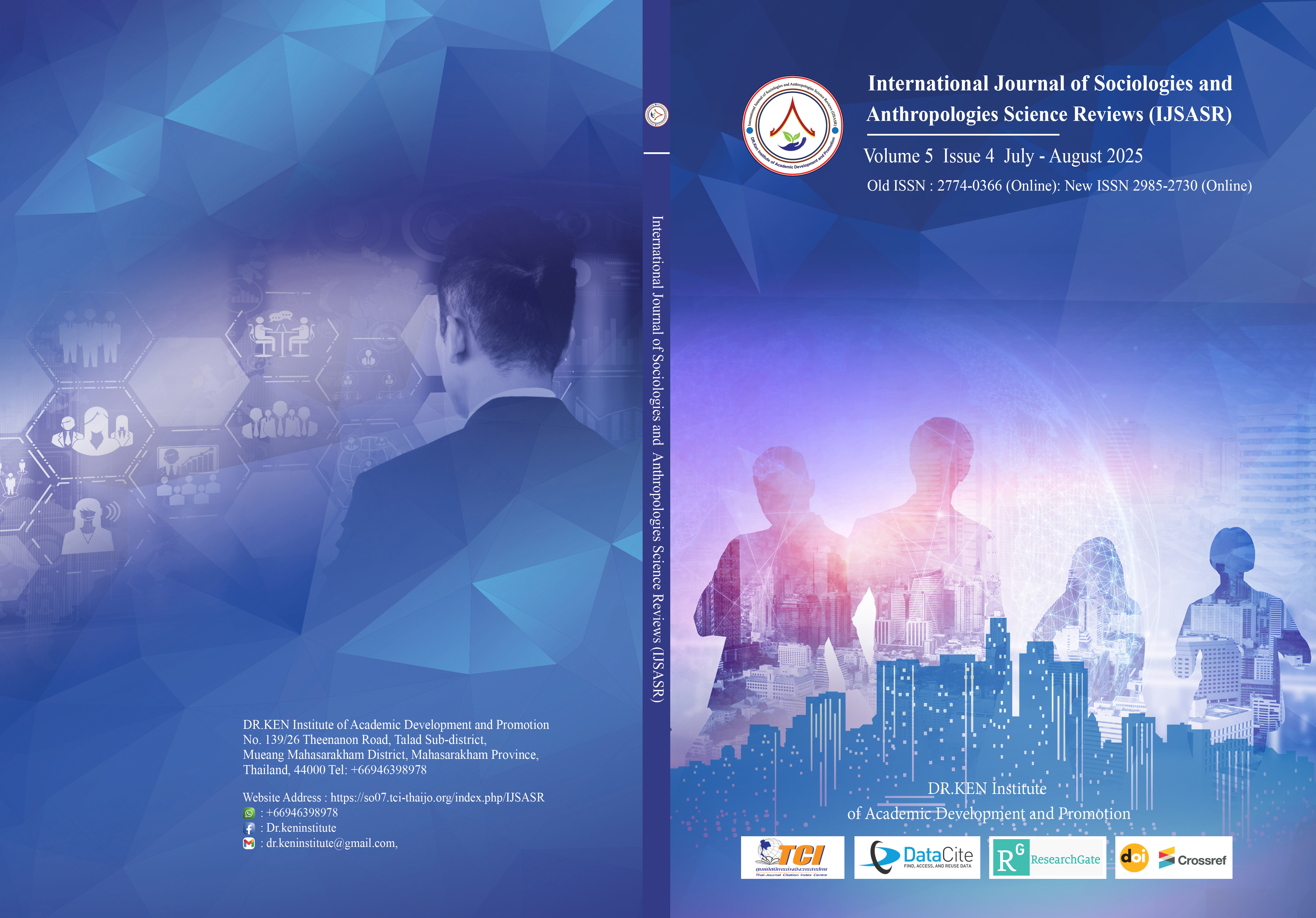Developing Potential for Excellence in Language, Music, Art, and Culture for Upper Secondary School Students in Maha Sarakham Province for Social and Local Development
Main Article Content
Abstract
Background and Aim. The objectives of this research are as follows: 1. To study the problems and potential of high school students in the Maha Sarakham provincial area regarding language, music, art, and culture.2.To develop students’ potential towards excellence in language, music, art, and culture, to integrate with social and local development.2.To evaluate and summarize the results of the development of students’ potential towards excellence in language, music, art, and culture.
Materials and Methods: This study used a participatory action research approach divided into three phases: 1. Problem and Potential Study Qualitative research involving literature review and fieldwork, including interviews with 200 high school students in Maha Sarakham to explore issues and potentials in language, music, art, and culture. 2: Capacity Development Qualitative methods with brainstorming, focus groups, and expert-led participatory activities to develop students’ excellence in the targeted 3: Evaluation and Conclusion Mixed-methods approach to evaluate development outcomes through pre- and post-assessments of 200 students, lesson learned extraction, and post-development knowledge training. This approach ensured active participation and comprehensive understanding to enhance students’ capabilities effectively.
Results: The research findings are as follows: Research Findings 1. Current Issues and Potential: Students showed strong foundations in the Isan dialect and traditional music, with notable potential in local handicrafts and cultural preservation. However, challenges included a lack of foreign language resources and teachers, shortages of musical instruments, limited art materials, and the impact of modern influences on local culture.2.Capacity Development: Development activities tailored to the local context—such as practical Chinese language learning, music camps, collaborative concerts, and cultural performance training—led to improved language skills, creation of local-identity artworks, stronger school-community networks, and income generation from student performances. 3. Evaluation: Students demonstrated significant skill growth and practical application: 80% of Chinese learners improved communication, music students enhanced individual and group performance, and art and culture students generated income through performances.
Conclusion: This study successfully investigated the current issues and potential of upper secondary students in Maha Sarakham Province in language, music, art, and culture. Through a participatory action research approach, the researcher developed and enhanced students’ capacities using locally tailored activities. The evaluation showed significant improvements in language proficiency, artistic skills, cultural engagement, and practical application, including income generation from performances. The findings highlight the importance of community collaboration and contextualized capacity development to foster excellence and contribute to local cultural preservation and societal advancement. Future efforts should continue to support resource development, expert involvement, and sustainable networks to maintain and expand these achievements.
Article Details

This work is licensed under a Creative Commons Attribution-NonCommercial-NoDerivatives 4.0 International License.
Copyright on any article in the International Journal of Sociologies and Anthropologies Science Reviews is retained by the author(s) under the under the Creative Commons Attribution-NonCommercial-NoDerivatives 4.0 International License. Permission to use text, content, images, etc. of publication. Any user to read, download, copy, distribute, print, search, or link to the full texts of articles, crawl them for indexing, pass them as data to software, or use them for any other lawful purpose. But do not use it for commercial use or with the intent to benefit any business.

References
Bakhshi, H., Fujiwara, D., Lawton, R., & Mourato, S. (2015). Measuring the economic impact of the creative industries: A systematic review and meta-analysis. Regional Studies, 49(1), 108–122. https://doi.org/10.1080/00343404.2013.787159
Beckman, G. D. (2005). The entrepreneurship curriculum for music students: Thoughts towards a consensus. College Music Symposium, 45, 13–24.
Beckman, G. D. (2007). "Adventuring" arts entrepreneurship curricula in higher education: An examination of present efforts, obstacles, and best practices. The Journal of Arts Management, Law, and Society, 37(2), 87–112. https://doi.org/10.3200/JAML.37.2.87-112
Bennett, J. M. (2016, February 3–5). Interactive methods for teaching about cultural differences [Conference presentation]. WISE Conference, Winston–Salem, NC. prod.wp.cdn.aws.wfu.edu
Bequette, J. W. (2007). Traditional arts knowledge, traditional ecological lore: The intersection of art education and environmental education. Studies in Art Education, 48(4), 360–374. https://doi.org/10.1080/00393541.2007.11650120
Castaldi, C. (2018). To trademark or not to trademark: The case of the creative and cultural industries. Research Policy, 47(3), 606–616. https://doi.org/10.1016/j.respol.2018.01.017
Lackéus, M. (2015). Entrepreneurship in education: What, why, when, how. OECD-LEED. https://www.oecd.org/cfe/leed/BGP_Entrepreneurship-in-Education.pdf
Manfredi Latilla, V., Frattini, F., Messeni Petruzzelli, A., & Berner, M. (2018). Knowledge management, knowledge transfer and organizational performance in the arts and crafts industry: A literature review. Journal of Knowledge Management, 22(6), 1310–1331. https://doi.org/10.1108/JKM-08-2017-0379
Miller, A. L., Dumford, A. D., & Johnson, W. R. (2017). Music alumni play a different tune: Reflections on acquired skills and career outcomes. International Journal of Education and the Arts, 18(29), 1–21. http://www.ijea.org/v18n29/
Siliutina, I., Tytar, O., Barbash, M., Petrenko, N., & Yepyk, L. (2024). Cultural preservation and digital heritage: Challenges and opportunities. Amazonia Investiga, 13(75), 262–273. https://doi.org/10.34069/AI/2024.13.75.29
Toscher, B. (2020). The skills and knowledge gap in higher music education: An exploratory empirical study. International Journal of Education & the Arts, 21(10). http://www.ijea.org/v21n10/
Yotsutamathada, N., & Nuansri, A. (2021). Development of a Chinese language learning model through learning by doing. Chophayom Journal, 32(1), 74–91.






